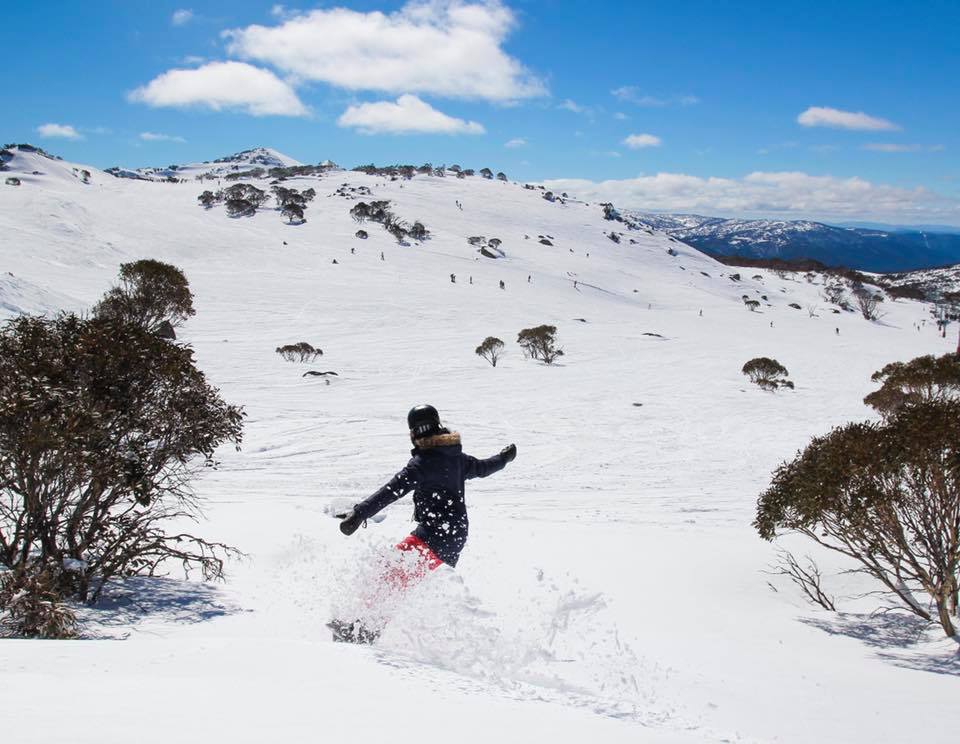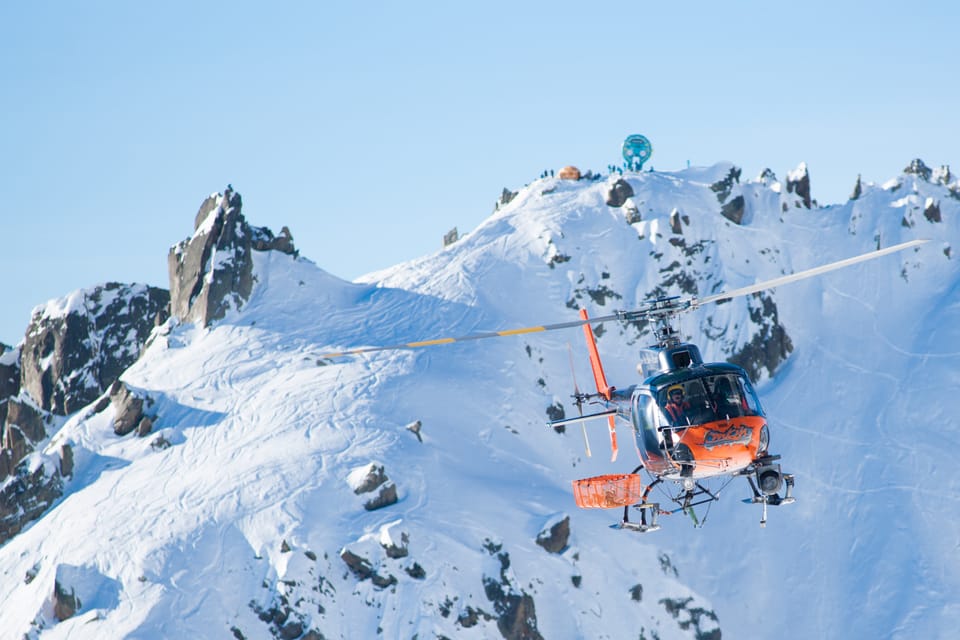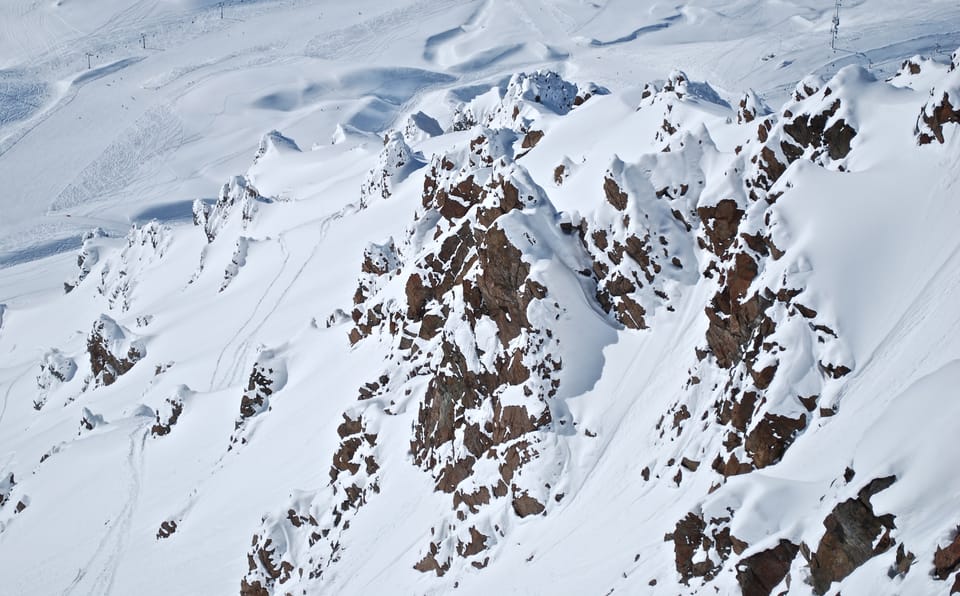Where’s Open For Skiing or Snowboarding in October 2017?

September was a surprisingly snowy month in the Alps and anyone lucky enough to get out on the continent’s glaciers last month are likely to have enjoyed the rare treat of some late summer powder skiing.
There were regular snow showers through last month which transformed conditions after the long hot summer in the southern half of Europe and as a result whilst September began with only a handful of glaciers open, October begins with 15 centres in five countries to choose from. Hintertux is pictured below.
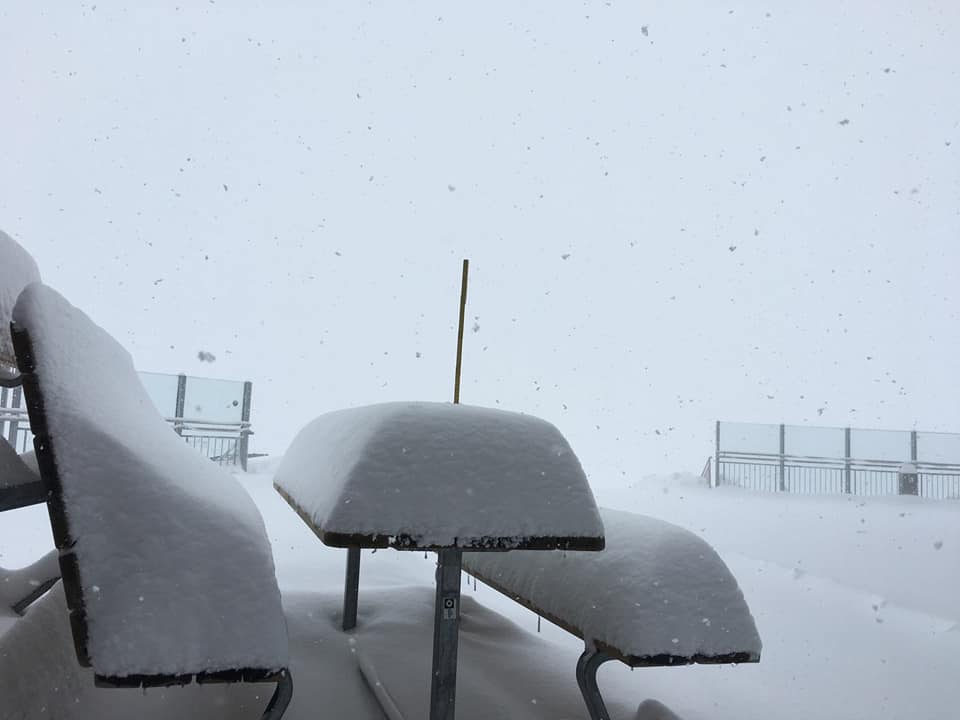
In North America there’s been fresh snow too and a few centres opened temporarily in celebration. There are no areas open as we start October but several are snowmaking and hope to open fairly imminently so long as temperatures stay low enough.
In the southern hemisphere the season is quickly winding down now. It has been a good season at most areas and in Australia several leading resorts have extended seasons due to end on October 1st by a week thanks to “the best snow conditions in 17 years.”
Here’s a little more detail:
Austria has more than half of the 15 ski areas open in the northern hemisphere within its borders after seven of the country’s glacier ski areas opened in the past four weeks, joining the Hintertux glacier which is open year round. Bases are in the 50-100cm bracket and most areas have 4-9km of runs open although Hintertux has 22km.
The French 2017-18 ski season got underway on the last day of September when Tignes opened their Grand Motte glacier (pictured below). It will be the only ski are open in the country until late November when Val Thorens opens, although Les 2 Alpes will open for a brief period in late October for it’s traditional ‘Autumn half term week of snow sport’.
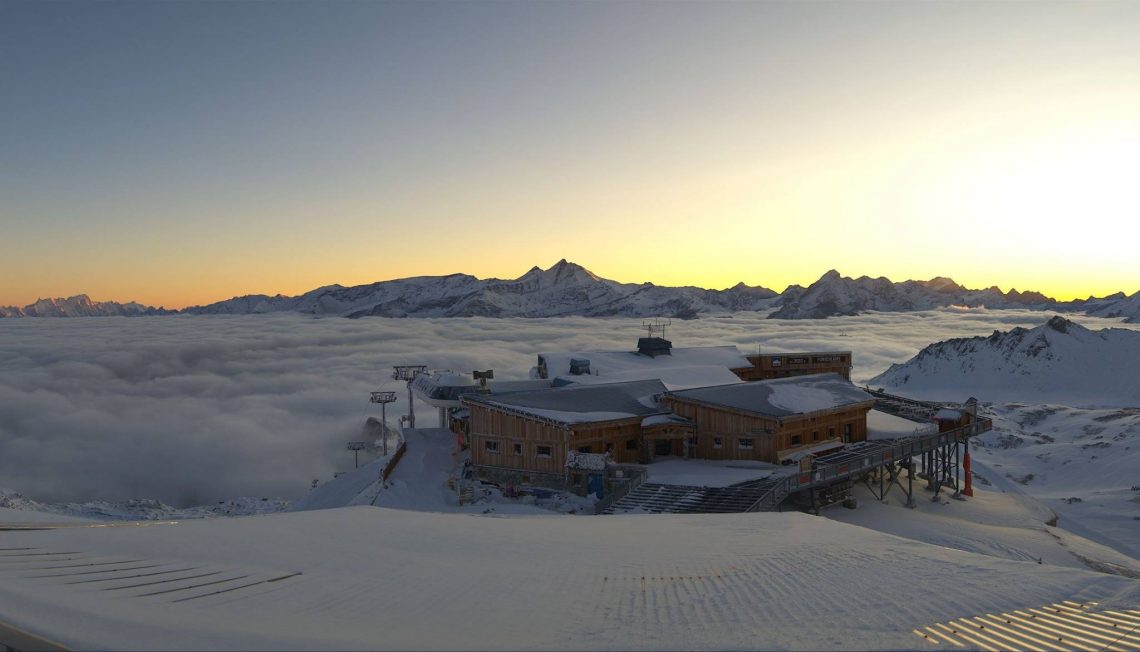
In Italy Passo Stelvio – which has been open since May – was joined by the glacier at Val Senales re-opening last month. Those two will be joined by Cervinia on two successive weekends from the middle of October and permanently from the end of the month.
Switzerland too has two glaciers currently open at Saas Fee and Zermatt, both with around a 60cm (two foot) base. Here four more glaciers are expected to open in October if conditions remain good, although most not until the latter half of the month. The Diavolezza glacier in the Engadin region near St Moritz is targeting 21st October, then Glacier 3000 near Gstaad and Flims are aiming for the last weekend of October. The fourth new opening is likely to be the Titlis glacier above Engelberg but it hasn’t announced a date yet.
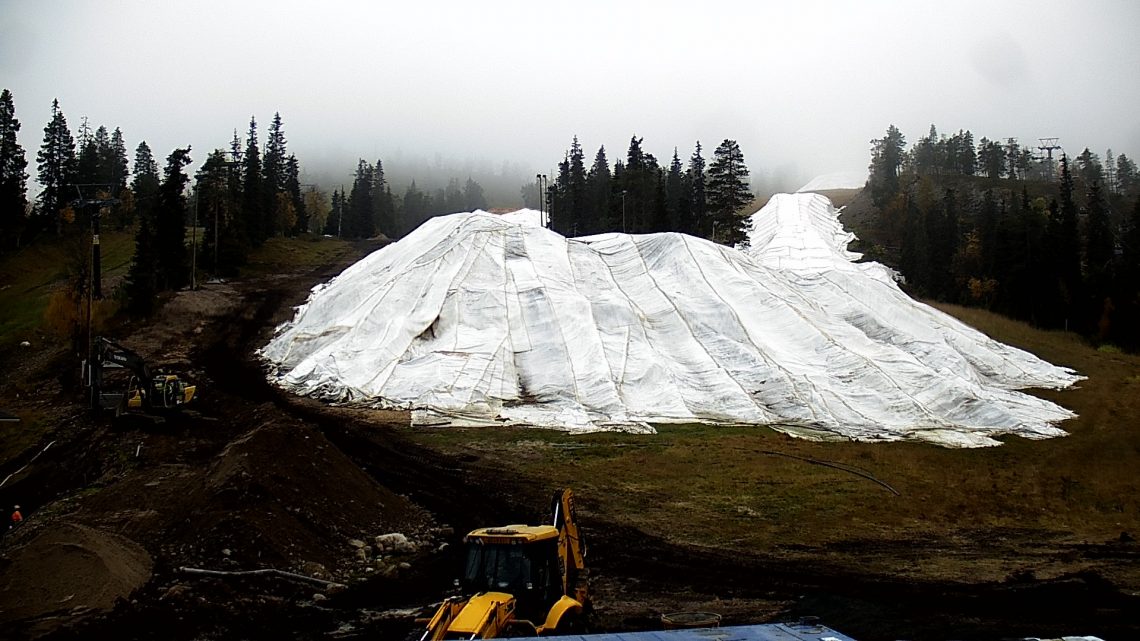
Elsewhere in Europe there are two centres open in Norway now. The Galdhoppigen glacier has been open all summer but Geilo opened a run, using snow saved and stockpiled from last season on 3oth September. So it is technically the first non-glacier ski area to open in the northern hemisphere for 17-18!
It’s scheduled to be followed by Ruka in Finnish Lapland next Saturday 7th October using the same snow storage technique (pictured above).
Across the Atlantic in North America
…there has been some heavy snowfall too with ski areas across the western side of the continent reporting up to 40cm of fresh snow in 36 hours (at Marmot Basin in Alberta, pictured below) on the last day of summer and first of summer.
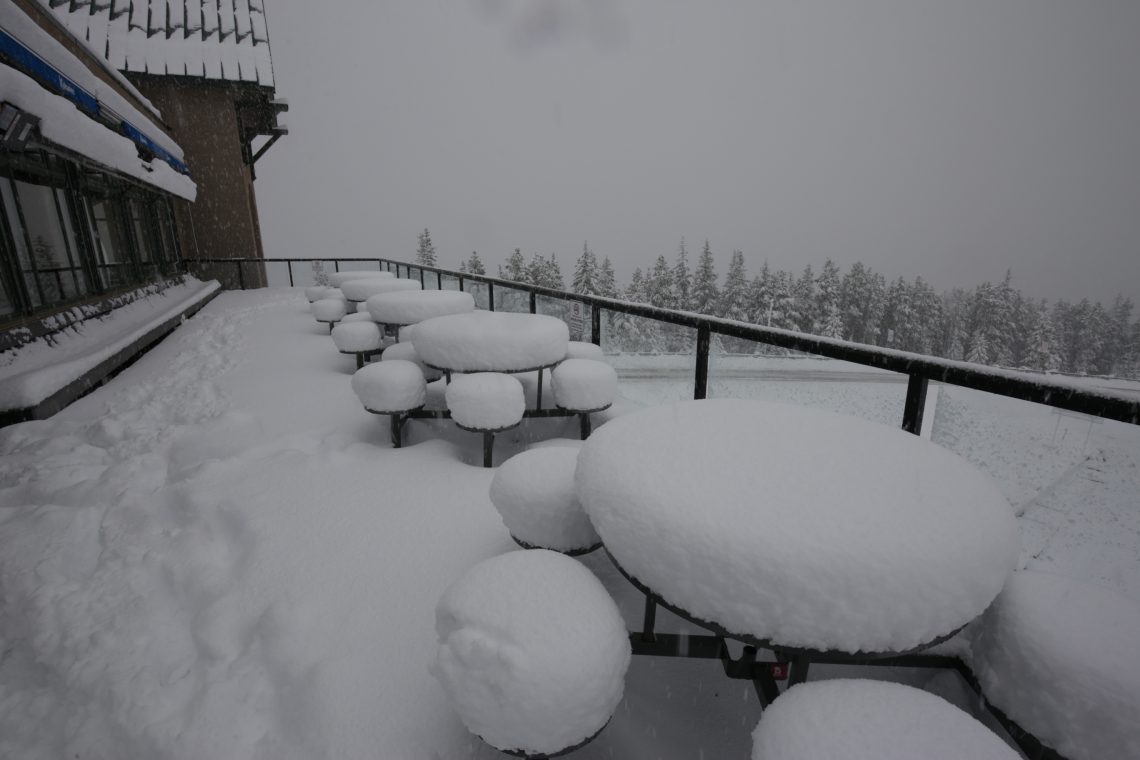
It was too early and too short lived for any to be able to open permanently for the season because of it but again it created a huge spike of excitement for the season ahead and two areas – Silverton Mountain in Colorado and Mt Bachelor in Oregon – did run their lifts the weekend after the snow fell to allow excited skiers and boarders the chance to make some turns whilst it was there.
As of the end-of-September snowmaking has also started in Colorado with the ski areas of Arapahoe Basin (below) and Loveland saying they’re targeting a mid-October opening for the season – subject to temperatures staying low enough for snowmaking to continue.
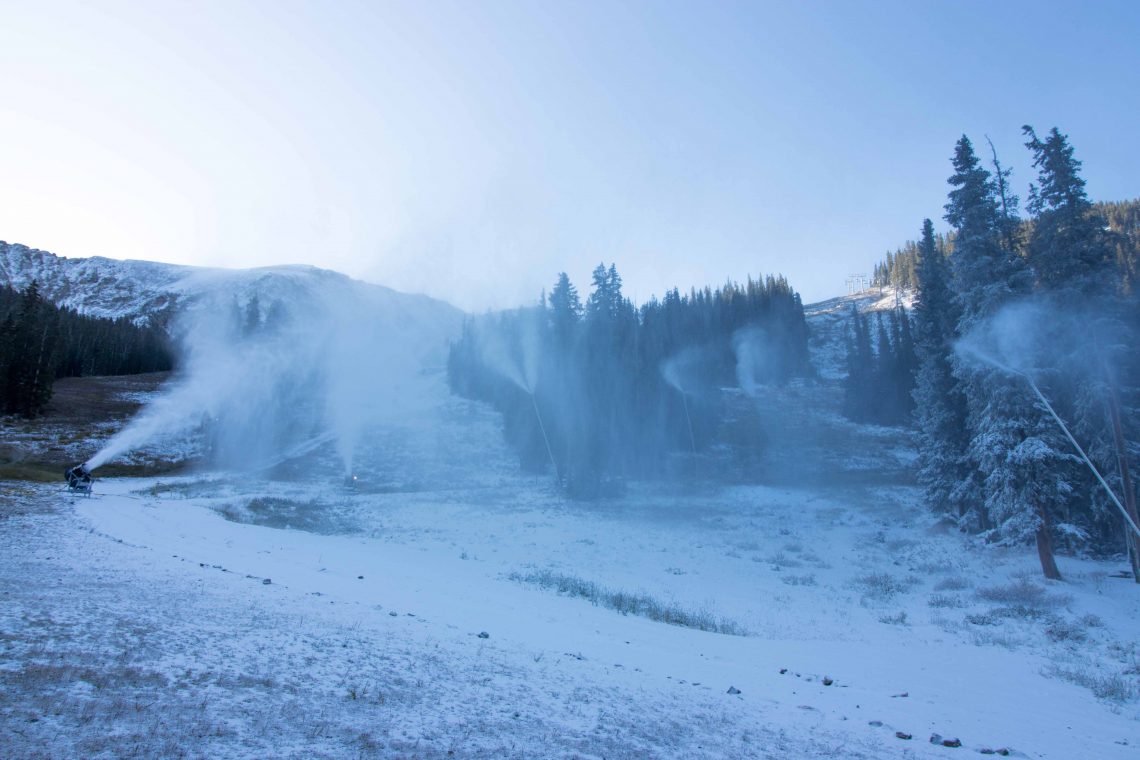
The season is winding down in the southern hemisphere
…with most centres closing on the 1st, 8th or 15th of October if they have not already in Australia, Argentina, Chile and New Zealand. Base depths are good at still open centres though – up to 3.5m at Mt Hutt in NZ and Valle Nevado in Chile. Perisher in Australia is pictured below and at the very top.
